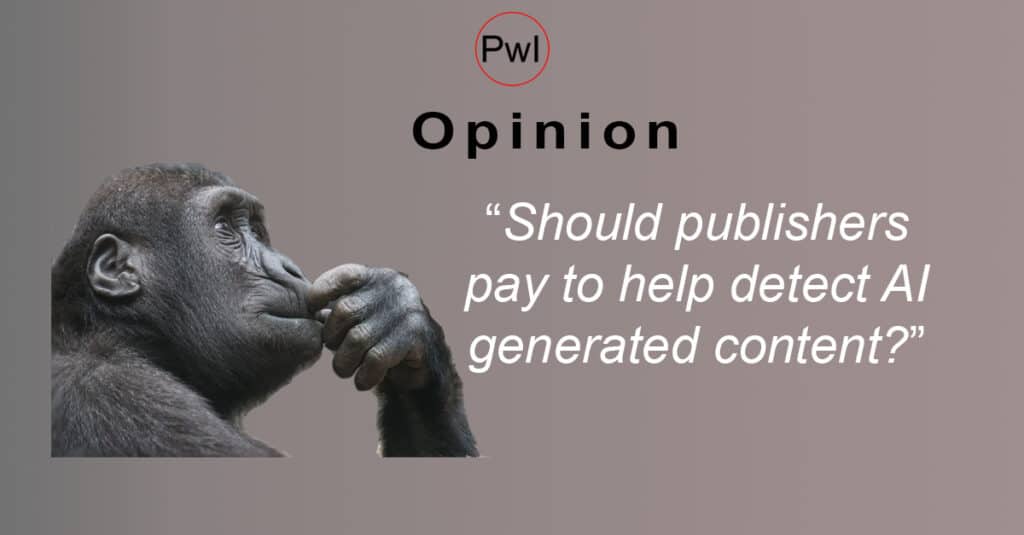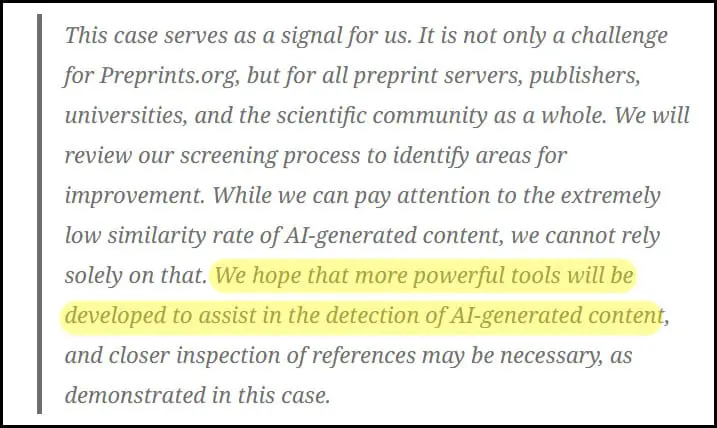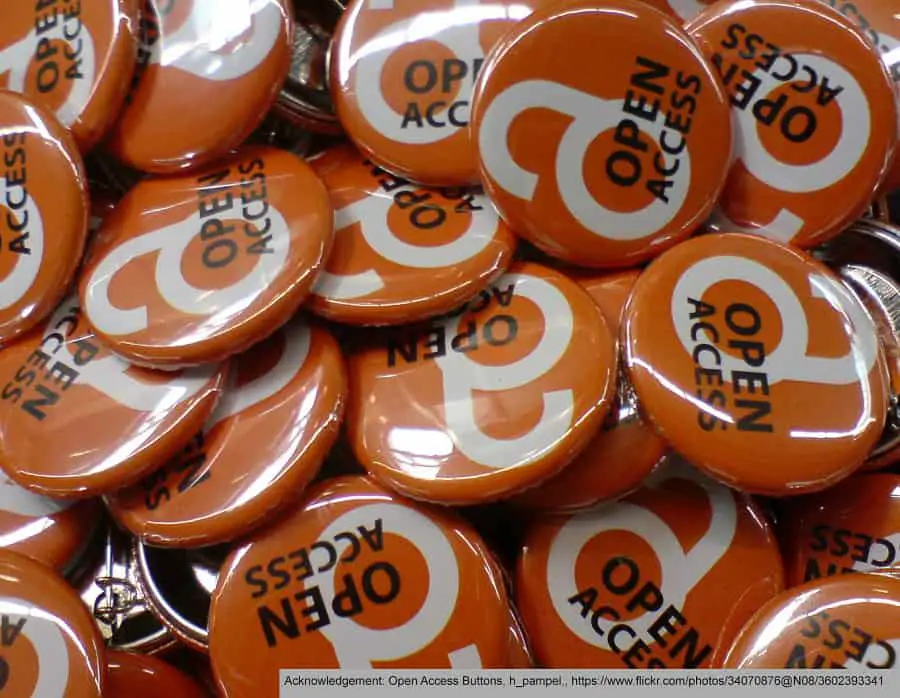Introduction
We recently saw an article published in Retraction Watch which talks about AI generated content and how it creates citations to papers which do not exist.
The article is worth a read, but we were particularly drawn to a one part of the article.
This statement was made by a representative at MDPI, but the same sentiment could have been made by any publisher.
In this article we consider a possible consequence of this, what at first sight, might seem a benign statement.
The need for better AI detectors
Given the introduction of generative AI tools such as ChatGPT, and the many hundreds of tools that have been released in the past year, there is an urgent need to detect AI generated content. This is required for a number of reasons.
- An AI generator tool cannot be listed as an author, so the human authors have to take responsibility for the article. As such, content cannot be simply generated by an AI tool and published as-is.
- At the present time, AI tools are not able to develop knowledge, which is a main requirement of a peer reviewed scientific paper. That is, the paper must make a contribution to the development of the current knowledge base. AI, at the present time, can only draw on the existing knowledge base due to the way it is trained.
- Peer reviewers have the right to know that what they are reading is written by (or not) an AI tool. Similarly, authors have a right to know that their paper is being reviewed by a human and not an AI tool, but that is a different topic.
- Authors are required to acknowledge any help they have received and this includes AI tools. If AI is detected, and it has not been acknowledged, this could be a reason for rejecting a paper.
How can we detect AI generated content?
Unfortunately, we cannot tell you how to detect AI generated content, but we do know that there is a lot of work being done in this area.
It won’t come as a surprise that the scholarly community will play a significant role in the development of such tools.
To be truthful, I suspect that the community will relish and rise to this challenge. After all, that is what researchers live to do; look at problems and try to find solutions.
Who will fund the research into detecting AI generated content?
Like a lot of research, it will be funded by universities and/or research grants. Research grants are most likely funded by the public purse, that is tax payers money. It is the tax payers that is likely to bear the largest burden.
Research will also be carried out by corporations, with the expectation that they will get a return of that investment by selling, or licensing, the software that is developed. It is good to see corporations investing in R&D but one downside is that they are less inclined to publish, so the know how will be less widely disseminated than if the research was carried out in a university, where there are pressures to publish the results of that research.
Who benefits financially from research into detecting AI generated content?
The simple answer is that corporations that develop these detectors will benefit as they will have a product to sell.
Researchers and universities will benefit as they will be able to publish their research, in the same way that they benefit from other research they undertake. This may not lead to a direct financial benefit unless they are able to protect the intellectual property and exploit it in some way. This is certainly possible, but the majority of research is not exploited in this way as there is more pressure on publishing papers, which places the research into the public domain.
The other beneficiaries will be those that use the AI detectors. Publishers will come under increasing pressure to detect AI generated content and if they are able to do this in a financially prudent way (i.e. cheaply) then so much the better, for the publisher anyway.
Who should the develop of detecting AI generated content?
In the above message from MDPI it says:
“We hope that more powerful tools will be developed to assist in the detection of AI-generated content.“
We are sure that everybody wishes for this, for the reasons given above, but it does beg the question, who should fund the development of these tools?
In “The money behind academic publishing“, it states that:
“Elsevier has a profit margin approaching 40%, which is higher than that of companies such as Microsoft, Google and Coca Cola, and the curve is pointing upwards“, citing several sources such as a Guardian article, an STM report and an article in The Bookseller.
Given that scholarly publishing is a profitable industry, should they not pick up part of the bill for addressing the issues that are of concern to not only their sector but also to their customers?
If effective tools are not developed, the sector that supports their livelihoods will fall (further) into disrepute as those less scrupulous than themselves will take advantage of these tools and our inability to detect their use will enable agents,
Final Thoughts
Scholarly publishers are often criticized for taking advantage of the scholarly community by charging them to publish the articles are/or charging them to read their own work. This is done via article processing charges (APCs) [to pay to publish an article] or subscription fees [to pay to read articles that a scholar has written but then signed the copyright over to the publisher].
Moreover, the scholars not only write the papers (and pay for the privilege) but also act as an unpaid work force in reviewing and acting as editors for the journals.
We hope that the development of tools to detect AI generated content is not another example which the scholarly community effectively funds and the publishers take advantage of, at no cost to themselves.



